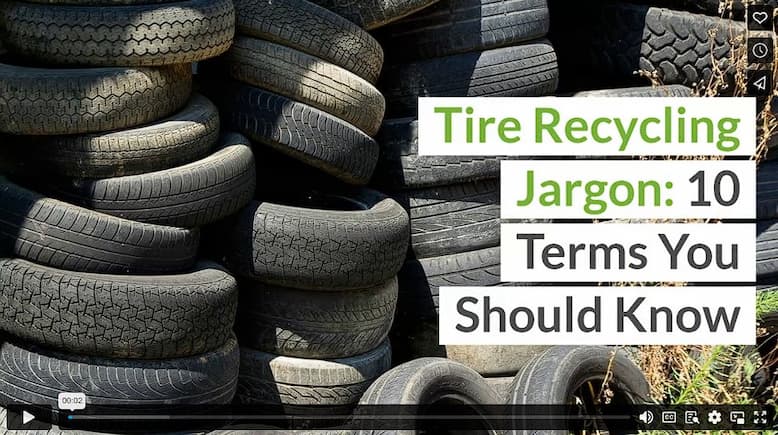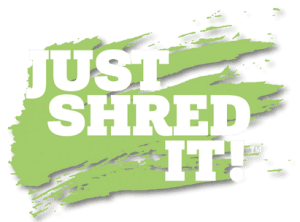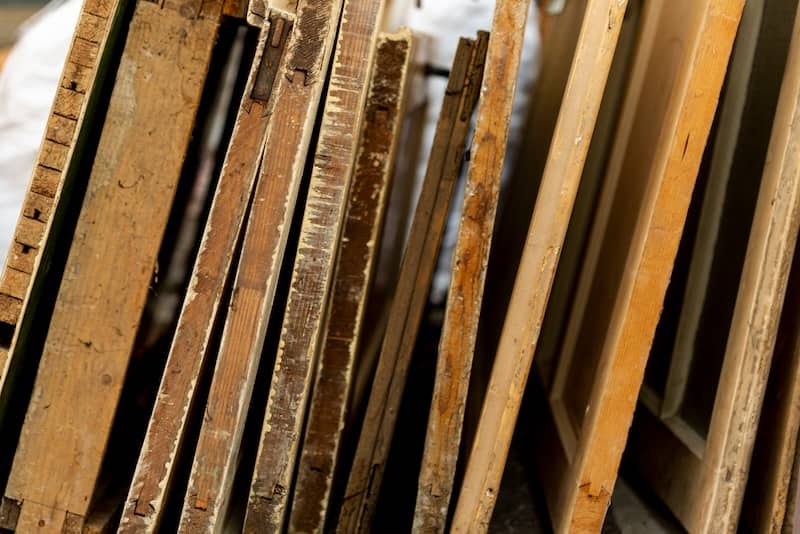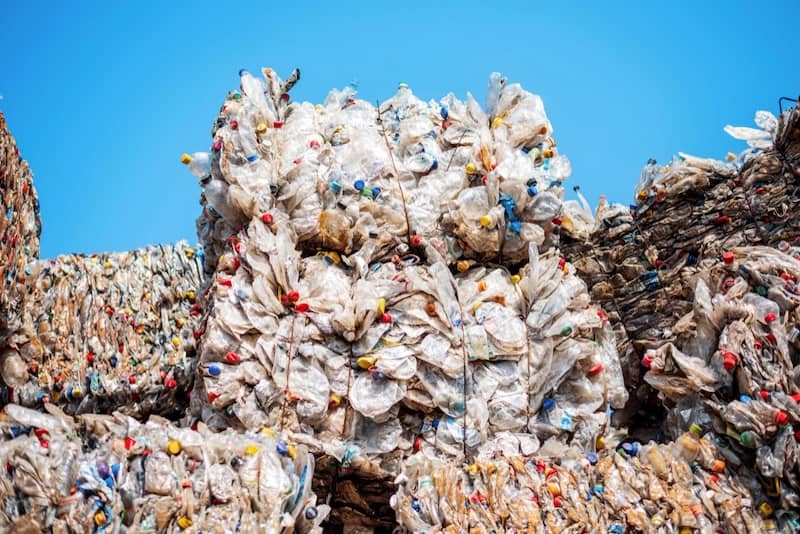As in every specialty, tire recycling has expressions, acronyms, and slang peculiar to itself. If you are starting a tire shredder business or learning about the recycling process, learning a few words can go a long way to understanding what’s going on. Knowing words in common usage in recycling circles can give you more confidence when communicating ideas, making recycling line decisions, and keeping pace with competitors.
1. Abatement
The term abatement describes the reduction of tire stockpiles by relocating them to a tire recycling line. Recyclers also use the term abatement when reducing a pile of tire chips that have already been through the shredders.
Used in a sentence:
- “We reached the stockpile abatement goals before the end of the month.”
Interestingly, in terms of law, abatement is defined as “the removal of a nuisance.” Although piles of tires can be a nuisance, a tire recycler sees a pile of tires as a resource with potential value to society.
2. Bagel Slice
In tire recycling jargon, a bagel slice refers to cutting a tire lengthwise to form rings. It’s called a bagel slice because the cut mimics preparing a bagel for toasting.
Used in a sentence:
- “We need to bagel slice the tires before feeding them into the primary shredder.”
The term bagel slice is interchangeable with the term bagel cut.
3. Cracker Mill
A cracker mill is a large machine that reduces tire rubber into various smaller sizes. By rotating two steel drums in opposite directions, a cracker mill grinds the rubber into crumbs or powder. Cracker mills use hydraulics to achieve the necessary torque and power.
Used in a sentence:
- “The cracker mill needs a maintenance check.”
4. Crumb Rubber
We decided to highlight another word beginning with C since it relates to the cracker mill and is one of the more prominent products of tire recycling plants.
Cracker mills produce crumb rubber. It looks like rough black sand. Ground tires qualify as crumb rubber when processors reduce tire shreds to pieces smaller than half an inch in size.
Used in a sentence:
- “This crumb rubber is of the finest quality for asphalt mixing.”
5. Devulcanization
To form tires suitable for life on the road, manufacturers harden rubber by adding sulfur. This process creates vulcanized rubber. Tire recyclers often reverse this process with softening agents, heat, and pressure. Devulcanized rubber is more malleable than its vulcanized counterpart. Hence, it is more valuable to many industries.
Used in a sentence:
- “At the end of the shredding process, the rubber is devulcanized and bagged.”
6. ECO Green Equipment
We are ECO Green, a leader and innovator in tire recycling equipment. Our product line ranges from tire shredders to colorizing equipment. Headquartered in Salt Lake City, our team comprises world-class engineers, designers, and marketers.
Used in a sentence
- “ECO Green makes equipment for tire recycling plants around the world.”
7. Fluff
Tires aren’t made out of 100% rubber. They have steel wires as well as textile fiber, which adds structural integrity. Recycling plants separate the textile fiber from the rubber through a process known as liberation. This fiber has a relatively low density and is known as tire fluff.
Used in a sentence:
- “Most tires are between 6-8% fluff by weight.”
8. Granulator
Not to be confused with the cracker mill, the granulator is usually the second or third step on a tire manufacturing line. It reduces tire shreds into smaller pieces with steel blades and plates. Some granulators can reprocess tire material multiple times to separate the steel wire and fluff from the rubber.
Used in a sentence:
- “Our new granulator is 30% more efficient than our old one.”
9. Hydraulic Drive
Hydraulic drives are not unique to tire recycling equipment. Incredibly powerful and efficient, hydraulic drives save energy and process larger loads than electric drives. The hydraulics need to be well maintained for a tire recycling line to run smoothly.
Used in a sentence:
- “The hydraulic drive makes shredding tires a worthwhile investment.”
Hydraulic drives are not unique to the tire recycling industry.
10. Inputs and Outputs
Tire recycling plants function on a conveyor belt system. This setup means that there are certain materials and products that every tire processing site brings in and sends out. Scrap tires are the input for all tire recycling plants. However, plants can specialize in different types of tires, from gigantic tractor tires to ordinary passenger car tires. Outputs are even more varied. Recyclers turn the rubber, steel, and fluff from end-of-life tires into rubber caps, hoses, fuel, playgrounds, and asphalt.
Used in a sentence:
- “Our tire recycling business transforms the useless input of worn-out tires into valuable TDF (Tire-derived fuel).”
Fluency is a Journey
Although we didn’t cover the entire alphabet, hopefully, the terms described here jumpstart your journey into the world of tire recycling. The equipment, process, and outputs of tire recycling are the bread and butter of making a new tire recycling business profitable. Fluency in the language and jargon of a specialty takes time. Be patient with yourself as you learn the ins and outs of the tire recycling trade.
Video





